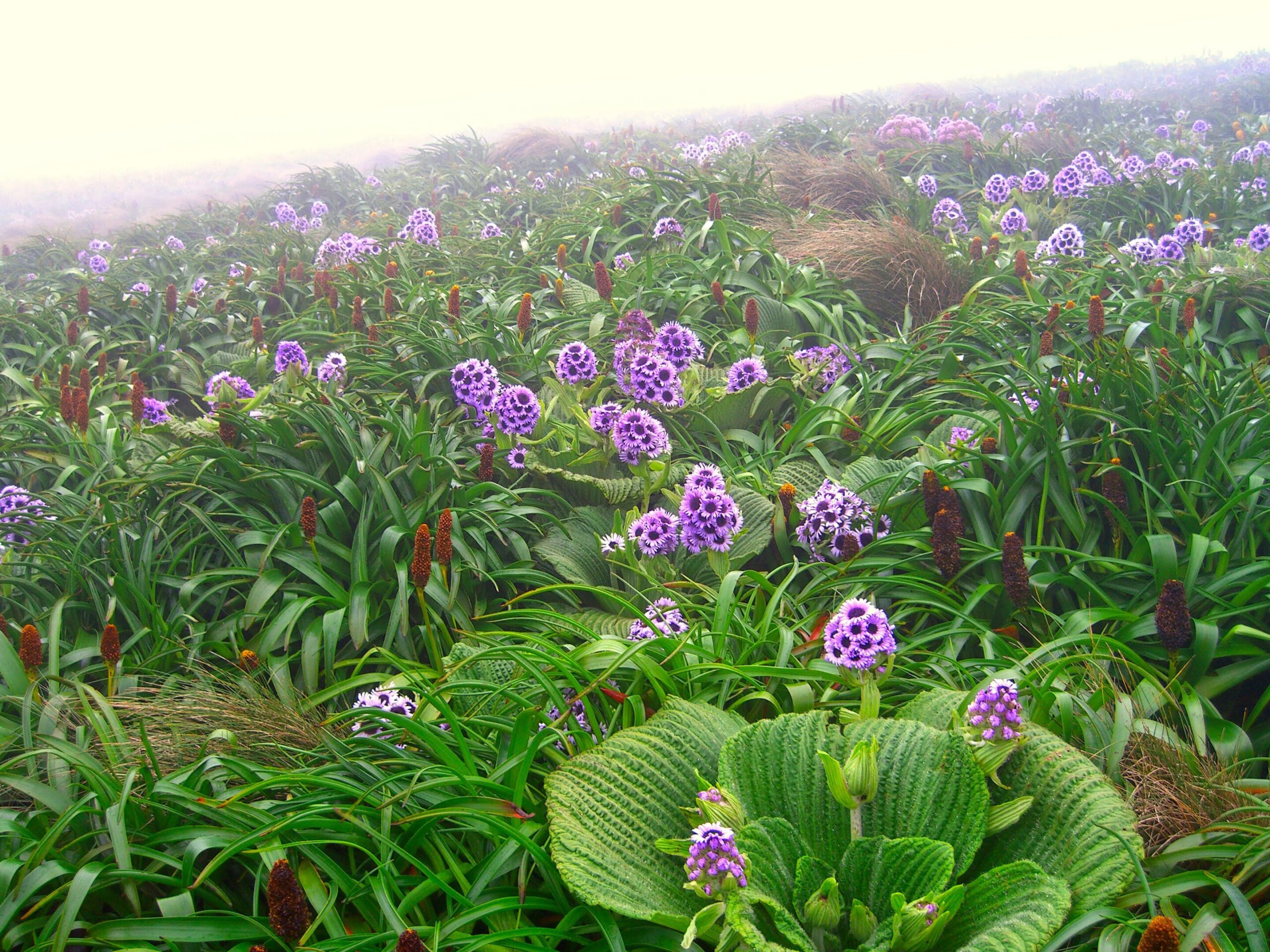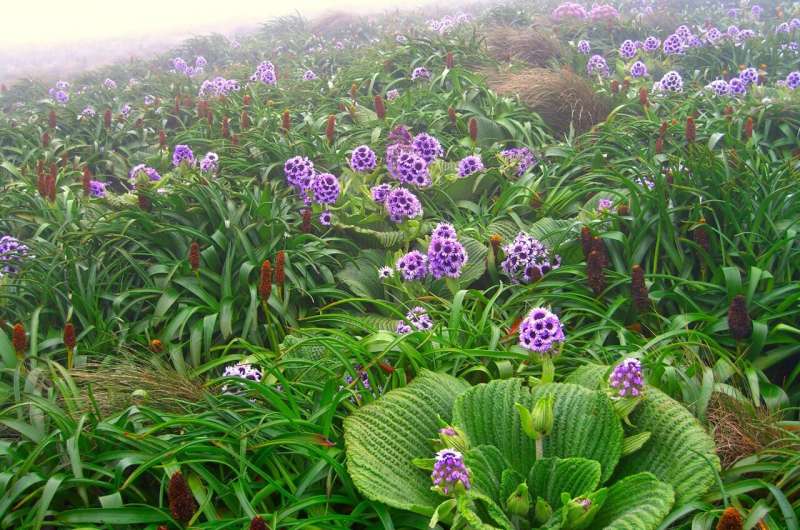

Asteraceae, a family of flowering plants, are the most diverse group of flowering plants in the world. This plant family comprises about 34,000 species. An international research team with the participation of the University of Göttingen has now compiled and analyzed a new global database on the distribution and evolutionary history of all Asteraceae species.
The researchers found that an unexpectedly high number of evolutionary events—known as “speciation” where a new species of plants evolves from a common ancestor—occurred in the aster family within relatively short time periods on many islands worldwide. The results are published in Nature Communications.
The presence of Asteraceae is characteristic of the flora of remote islands such as the Galápagos, Mauritius and Polynesia. These plants include some of the most spectacular botanical species, from the diverse genus Bidens, meaning “two toothed,” of the Pacific islands, to the strange-looking and highly endangered silverswords of Hawai’i, to the giant Scalesia trees of the Galápagos Islands.
Although they are a prime example of island biodiversity, until now it has not been possible to get a complete picture of where these plants fit in the bigger picture.
To meet this challenge, researchers in botany and evolutionary biology have compiled and analyzed a global database containing information on the distribution and evolutionary history of all Asteraceae species on many islands.
The team found that there are more than 6,000 species of Asteraceae native to islands, and that almost 60% of these are found exclusively on islands. Their findings confirm one of the most important and well-established theories in ecology and evolution, which states that larger, isolated islands harbor a greater number of unique species.
Many of these species are threatened with extinction and are only known from a few individuals surviving in the wild. “Asteraceae provides a treasure trove of information to help researchers understand why and how new species evolve in the most remote environments in the world,” says Professor Holger Kreft, head of biodiversity, macroecology and biogeography at the University of Göttingen.
The researchers were also able to identify dozens of possibly undiscovered speciation events on islands worldwide. Speciation occurs in a limited geographical area over a period of “only” a few million years. In this process, a common ancestor has colonized an island and produced many new species that often differ drastically in size, shape, habitat and other characteristics.
The number of these newly discovered evolutionary events surprised the researchers. “Botanists have long suspected that Asteraceae has evolved in remarkable ways on islands, but our study shows that the extent of evolutionary innovation in this family may be much greater than previously thought,” says first author Lizzie Roeble of Naturalis Biodiversity Center in Leiden, the Netherlands. These findings underline the importance of protecting this group of plants.
More information:
Lizzie Roeble et al, Island biogeography of the megadiverse plant family Asteraceae, Nature Communications (2024). DOI: 10.1038/s41467-024-51556-7
Provided by
Georg-August-Universität Göttingen
Citation:
New database covers distribution and evolutionary history of megadiverse flowering plant family on isolated islands (2024, September 20)
retrieved 20 September 2024
from https://phys.org/news/2024-09-database-evolutionary-history-megadiverse-family.html
This document is subject to copyright. Apart from any fair dealing for the purpose of private study or research, no
part may be reproduced without the written permission. The content is provided for information purposes only.